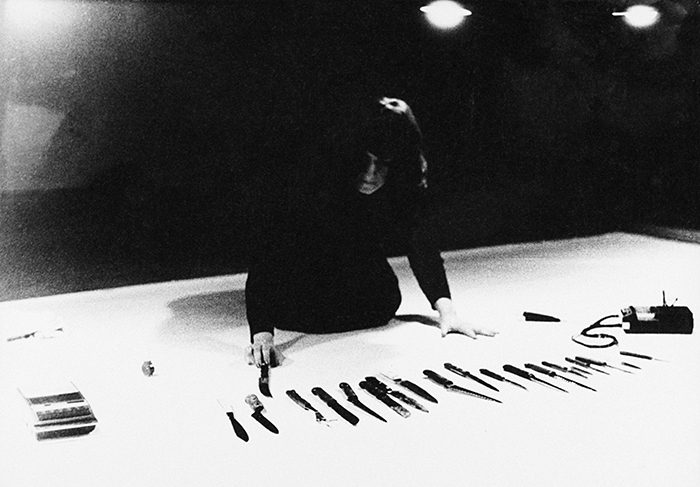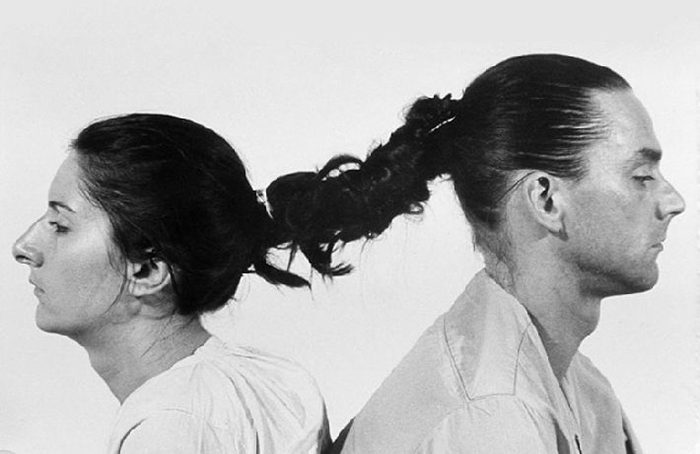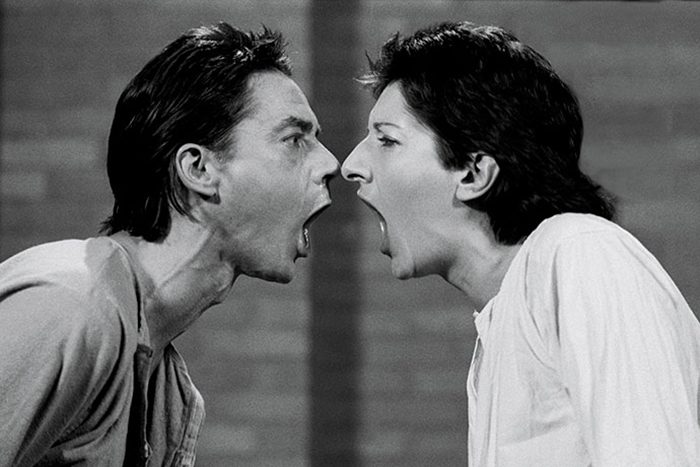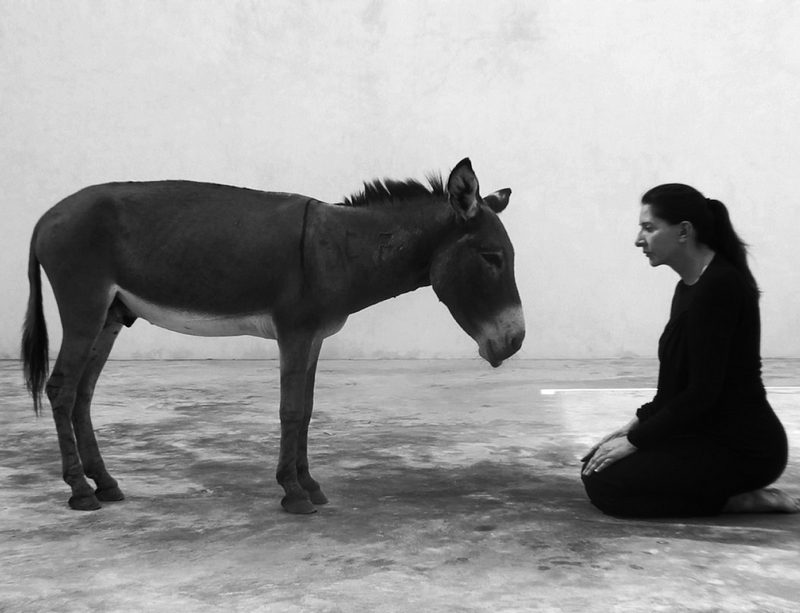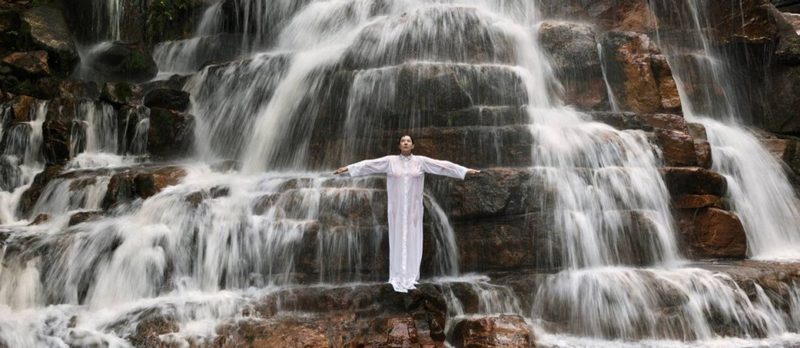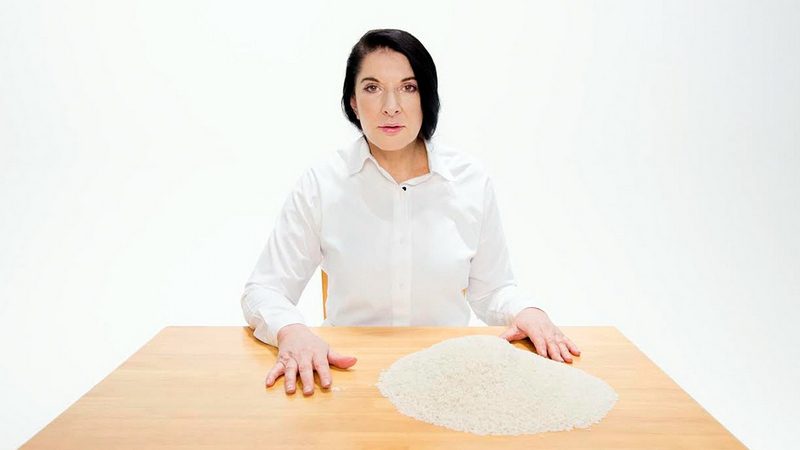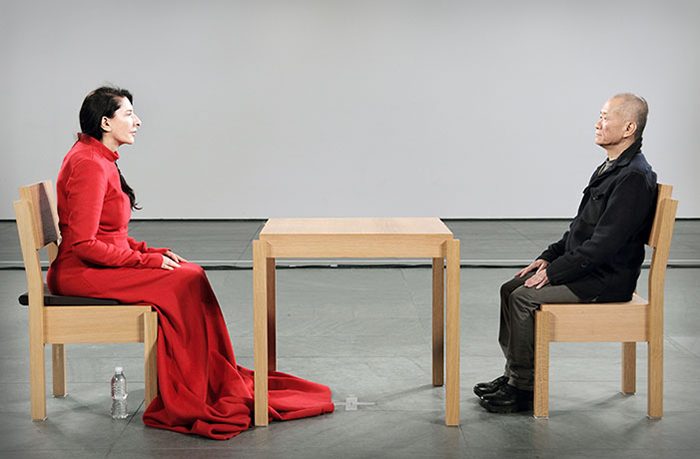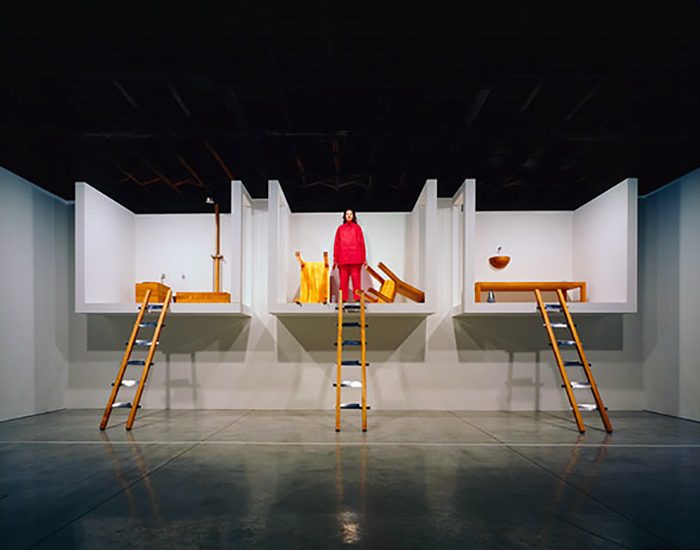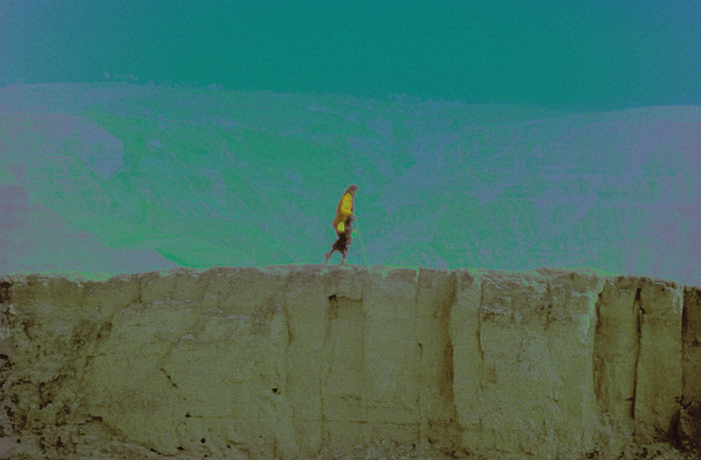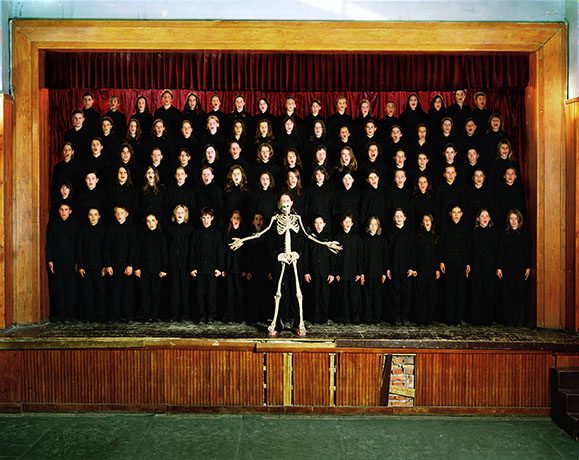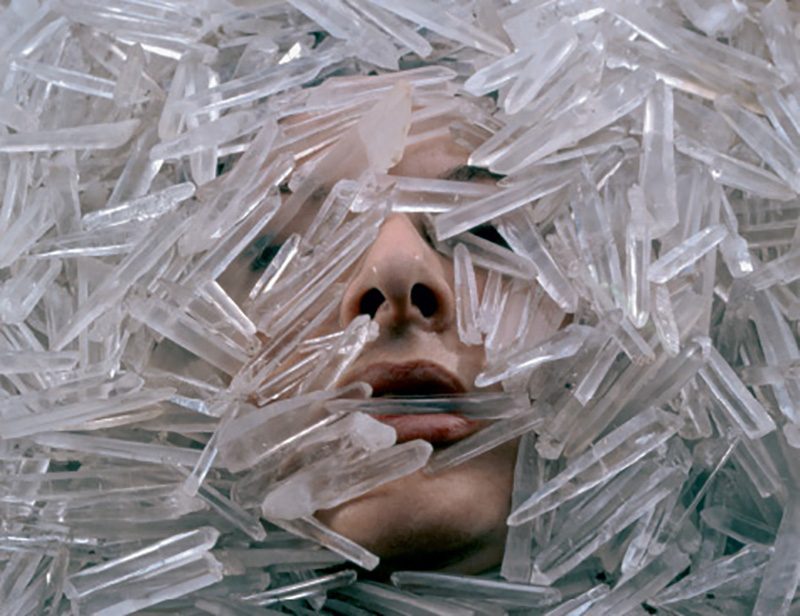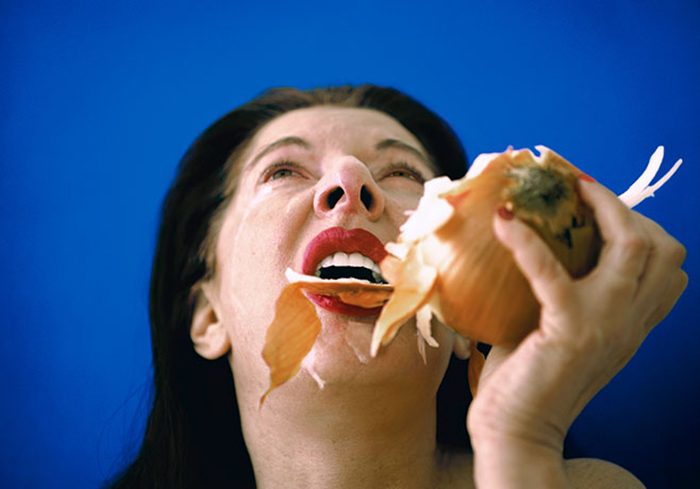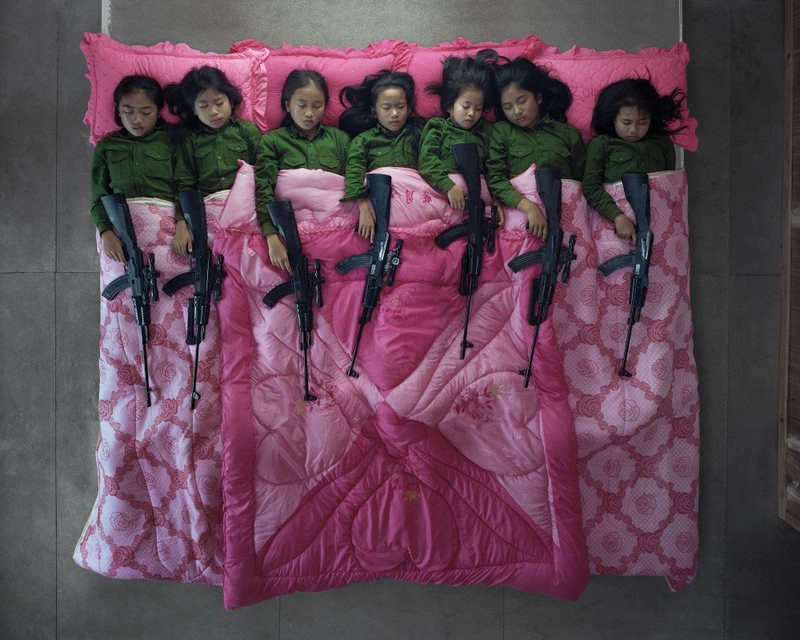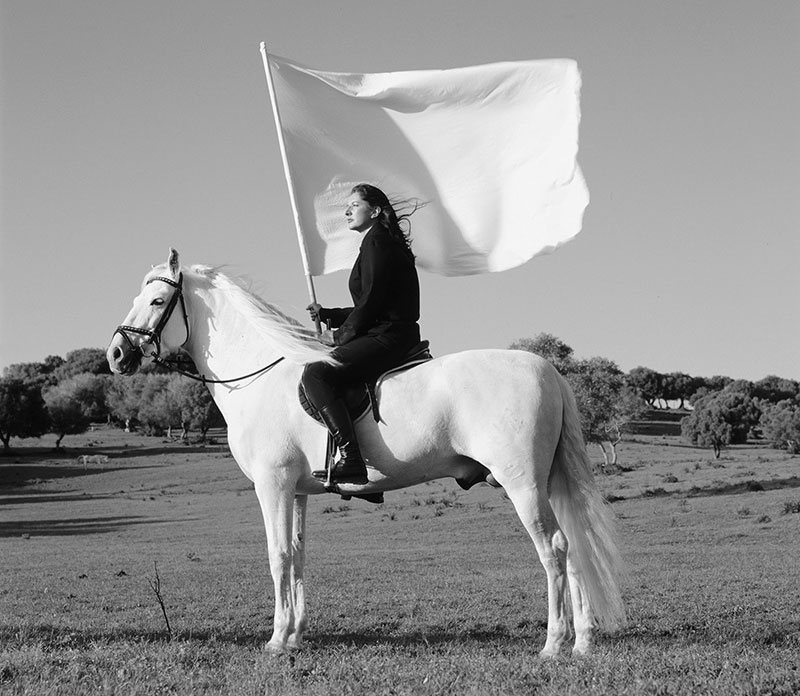TRACES: Marina Abramović
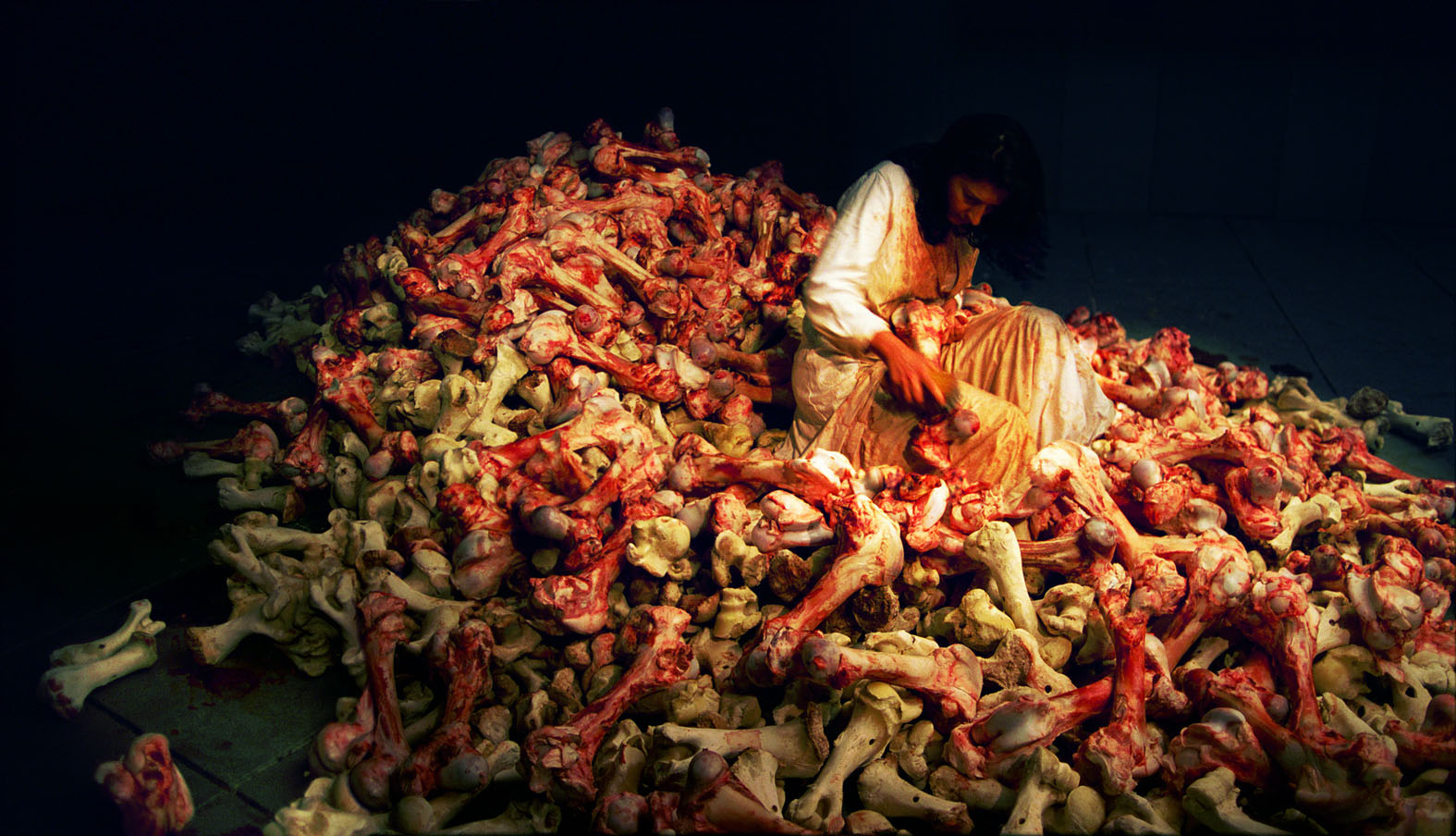 Today is the occasion to bear in mind Marina Abramović, (30/11/1946- ). She is without question one of the seminal artists of our time. Since the beginning of her career in Yugoslavia during the early ‘70s where she attended the Academy of Fine Arts in Belgrade, Abramovic has pioneered the use of Performance as a Visual Art form. This column is a tribute to artists, living or dead, who have left their mark in Contemporary Art. Through documents or interviews, starting with: moments and memories, we reveal out from the past-unknown sides of big personalities, who left their indelible traces in time and history…
Today is the occasion to bear in mind Marina Abramović, (30/11/1946- ). She is without question one of the seminal artists of our time. Since the beginning of her career in Yugoslavia during the early ‘70s where she attended the Academy of Fine Arts in Belgrade, Abramovic has pioneered the use of Performance as a Visual Art form. This column is a tribute to artists, living or dead, who have left their mark in Contemporary Art. Through documents or interviews, starting with: moments and memories, we reveal out from the past-unknown sides of big personalities, who left their indelible traces in time and history…
By Dimitris Lempesis
Marina Abramović was born 30/11/46 in Belgrade, Yugoslavia. Her great uncle was Patriarch Varnava of the Serbian Orthodox Church. Both of her parents were Yugoslav Partisans during the Second World War: Her father was a commander who was acclaimed as a national hero after the war, her mother Danica a major in the army and, in the 1960s, director of the Museum of the Revolution and Art in Belgrade. Abramović studied painting at the Academy of Fine Arts in Belgrade (1965-70), and at Radionica Krsta Hegedusic, Academy of Fine Arts in Zagreb (1970-72). It was in the early 1970s that she began creating Performative Art, initially creating sound installations, but quickly moving towards works that more directly involved the body. In her first Performance in Edinburgh 1973, “Rhythm 10”, she used a series of 20 knives to quickly stab at the spaces between her outstretched fingers. Every time she pierced her skin, she selected another knife from those carefully laid out in front of her. Halfway through, she began playing a recording of the first half of the hour-long Performance, using the rhythmic beat of the knives striking the floor, and her hand, to repeat the same movements, cutting herself at the same time. She has said that this work marked the first time she understood that drawing on the audience’s energy drove her Performance this became an important concept informing much of her later work. In her early work, Abramović often placed her body in danger she took drugs intended to treat catatonia and schizophrenia “Rhythm 2” (1974), she invited viewers to threaten her body with a variety of objects including a loaded gun “Rhythm 0” (1974). After performing “Rhythm 5” (1974), she said she “I realized the subject of my work should be the limits of the body. I would use Performance to push my mental and physical limits beyond consciousness”, and she cut her stomach with a razor blade, whipped herself, and lay on a block of ice “Thomas Lips” (1975). She has suggested that the inspiration for such work came from both her experience of growing up under Tito’s Goverment, and of her relationship with her mother: “All my work in Yugoslavia was very much about rebellion, not against just the family structure but the social structure and the structure of the art system there… My whole energy came from trying to overcome these kinds of limits”. Abramović created these pioneering works when Performance Art was still a new, emerging art form in Europe, and until the mid ‘70s she had little knowledge of Performances being done outside Yugoslavia, but in 1975, while in Amsterdam, Abramović met the German-born artist Frank Uwe Laysiepen known as Ulay, and the next year she moved out of her parents’ home for the first time to live with him. For the next 12 years, Abramović and Ulay were artistic collaborators and lovers. They traveled across Europe in a van, lived with Australian Aborigines, and in India’s Tibetan Buddhist monasteries, and spent time in the Sahara, Thar and Gobi deserts. Their works, which they performed in gallery spaces primarily in Europe, included “Imponderabilia” (1977), in which they stood naked in a narrow doorway, forcing spectators to pass between them, “Breathing In/Breathing Out” (1977), in which they inhaled and exhaled from each other’s mouths until they almost suffocated, “Relation in Time” (1977), involving them sitting back to back with their hair tied together, “Light/Dark” (1977), in which they alternately slapped each other’s faces and “Nightsea Crossing” (1981-1987), a Performance in which the pair sat silently opposite each other at a wooden table for as long as possible. In 1988, after several years of tense relations, Abramović and Ulay decided to make a spiritual journey which would end their relationship. They each walked the Great Wall of China, in a piece called “The Great Wall Walk”, starting from the two opposite ends and meeting in the middle and continuing their way. As Abramović described it “That walk became a complete personal drama. Ulay started from the Gobi Desert and I from the Yellow Sea. After each of us walked 2500 km, we met in the middle and said good-bye”. They have had very little contact with each other since that point, both proceeding independently with their artistic work. After the separation from Ulay, Abramović returned to making solo works she also worked with new collaborators such as Charles Atlas on “Biography”, (1992), and she worked increasingly with video such as: “Cleaning the Mirror #1”, (1995). In 1989, she began making a number of sculptural works, “Transitory Objects for Human and Non-Human Use”, which comprise objects meant to incite audience participation and interaction. In addition to her Performances during the ’90s, Abramović taught at the Hochschule der Kunste in Berlin and the Académie des Beaux-Arts in Paris (1990-91), as well as the Hochschule fur Bildende Kunste in Hamburg (1992). Beginning in 1994 she taught for seven years as a Performance Art professor at the Hochschule fur Bildende Kunste in Braunschweig, Germany. She was awarded the Golden Lion for Best Artist at the Venice Biennale for “Balkan Baroque” (1997), in response to the innumerable deaths that had taken place in the former Yugoslavia. Sitting on top of 1,500 cow bones in a white dress, she spent four days, six hours a day, washing each of these bones, surrounded by projected images of her parents and herself. The accompanying sound included her recorded description of methods used in the Balkans for killing rats and her singing of her native folksongs. The performance progression was made visceral due to the unbearable heat of the basement room and fetid smell. For Abramović, it was not enough to simply recount the number of people lost in modern-day war. Instead, she aimed to remember the lives, efforts and hopes of individuals killed by carefully touching and cleaning “their” physical bones and blood. Transforming her individual performative experiences into universal ideas was also an important concept for Abramović throughout all her work. The comparison between the inability to scrub away all the blood and the inability to erase the shame of war is a concept she viewed as having universal reach. In 2003 she won a New York Dance and Performance Award (“Bessie”) for “The House with the Ocean View” (2002), performed at Sean Kelly Gallery in New York. In 2005, she restaged Performances by artists such as Vito Acconci and Bruce Nauman, as well as her own “Thomas Lips” in an exhibition at the Guggenheim Museum called “Seven Easy Pieces”, for which she earned a U.S. Art Critics Association Award. Beginning on 9/11/05, Abramović presented “Seven Easy Pieces” at the Guggenheim Museum in New York. On seven consecutive nights for seven hours she recreated the works of five artists first performed in the ’60s and ’70s, in addition to re-performing her own “Lips of Thomas” and introducing a new Performance on the last night. The performances were arduous, requiring both the physical and the mental concentration of the artist. Included in Abramović’s performances were recreations of Gina Pane’s “Self-Portraits”, which required lying on a bed frame suspended over a grid of lit candles, and of Vito Acconci’s 1972 performance in which the artist masturbated under the floorboards of a gallery as visitors walked overhead. Abramović re-performed these works as a series of homages to the past, though many of the performances were altered from their originals. On 2010 (14/3-31/5) the Museum of Modern Art held a major Retrospective and Performance recreation of Abramović’s work, the biggest exhibition of Performance Art in MoMA’s history. During the run of the exhibition, Abramović performed “The Artist Is Present”, a 736-hour and 30-minute static, silent piece, in which she sat immobile in the museum’s atrium while spectators were invited to take turns sitting opposite her. The spring of 2012 Abramovic launched a major double exhibition at PAC and Lia Rumma Galeria, Milan showing all new work and unveiling “The Abramovic Method” to the world. In May, 2012, Abramovic founded the Marina Abramovic Institute (MAI), a platform for immaterial and long durational work to create new possibilities for collaboration among thinkers of all fields..In June 2014 she presented a new piece at London’s Serpentine Gallery called “512 Hours” , in 2015 SESC in Sao Paulo presented her biggest retrospective in South America.


